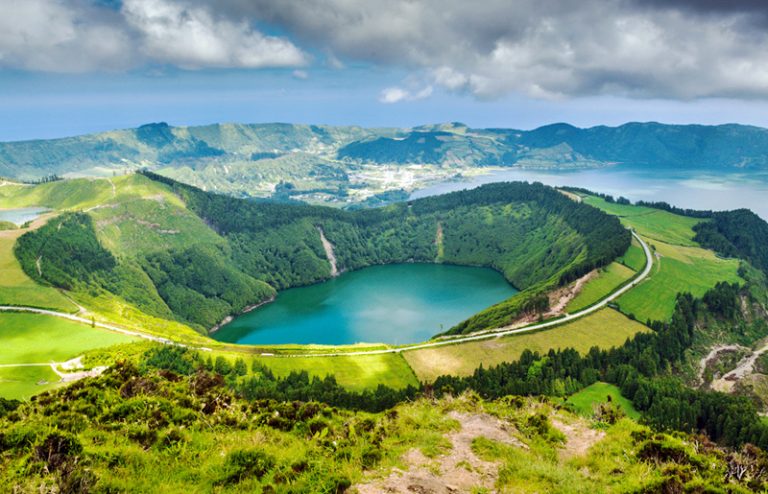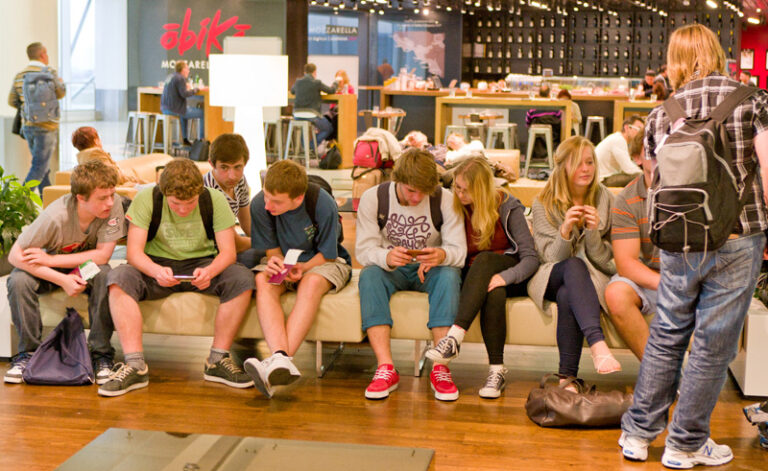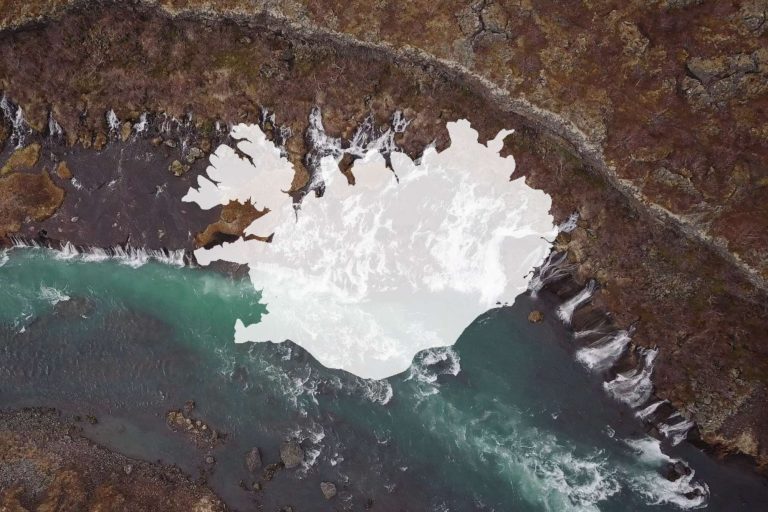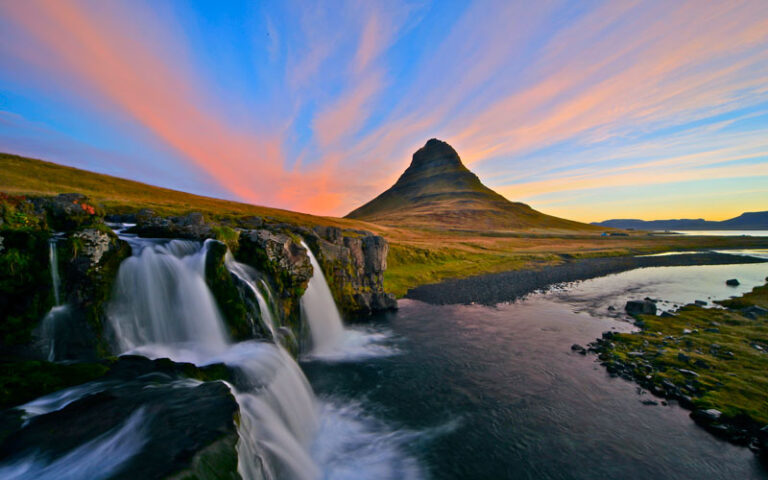Experiencing the volcano: Visiting Fagradalsfjall
An interview with Clive Stacey
We have all been avidly following the activity at Fagradalsfjall where the Geldingadalir eruption has been taking place since the 19th March 2021. The most recent government announcement has allowed all of us to go from day dreaming about visiting Iceland to actively planning a trip. Discover the World Education’s owner, Clive Stacey, was fortunate enough to visit Iceland, and during his trip he visited the current eruption site. The interview is perfect for you to use in your classroom so that students can consider what you might experience at a volcano and what to think about before going to Iceland…
What was the trek to the volcano like?
This is a rather rugged area of Iceland with many centuries of historic lava flows dominating the landscape. This makes for challenging walking conditions, but well worth the effort! The always resourceful Icelanders have done an amazing job in making it possible for their countrymen, and the odd foreign visitor like me, to enjoy the eruption reasonably close, but at this point in time the pathways are fairly crude, and in places difficult to navigate, especially when darkness falls.
Can you describe what you heard, smelt and felt at the site?
The volcano itself is extremely beautiful and as darkness fell the whole experience was extenuated. I walked down to the edge of the new lava, to collect a few samples. In-between the cracks I could see molten lava and the gases were quite intense, so I did not linger. The ground itself still shakes, and there is a constant murmur of the lava being expelled.
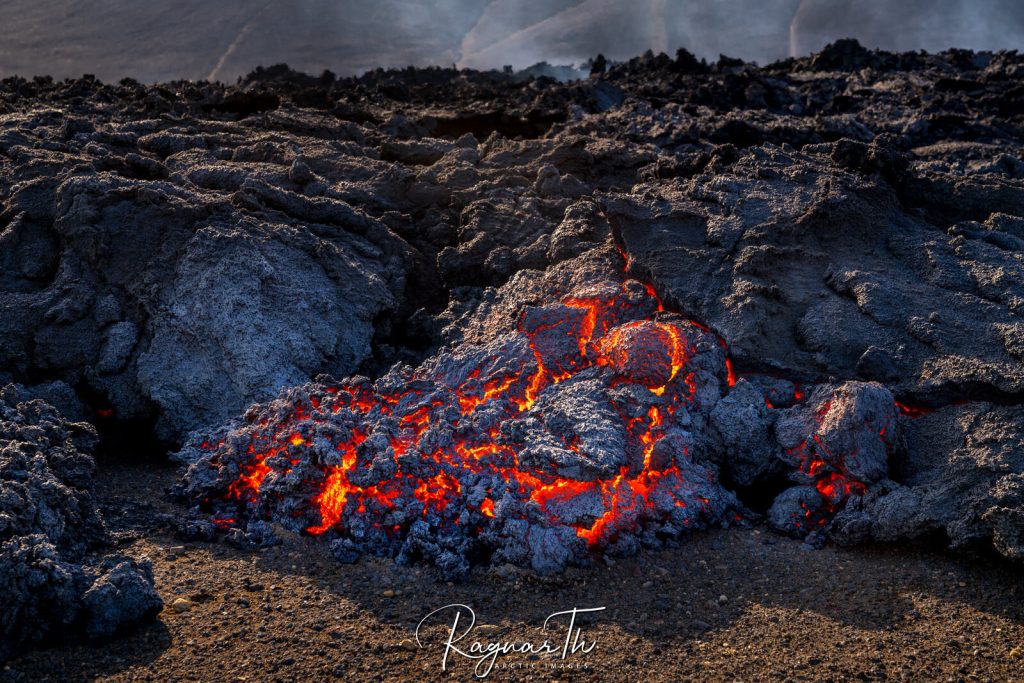
What tips do you have for anyone making the trip?
So the eruption is expected to last for some time, and the local authorities are planning on building decent tracks and viewing platforms. At present the eruption is quite wide-spread and has not stabilised to a point where such a scheme is possible. As the wind changes direction people have to be moved to different parts of the eruption area, as the gases can be quite toxic. However, Icelandic weather forecasts are extremely accurate and it’s possible to plan a reasonable time in advance and be reasonably sure that particular areas are safe from noxious gases. It is also advised to keep young children and dogs (or other pets!) away since they would be closer to ground level where gases tend to collect and be more concentrated.
What did you learn about this volcano that perhaps you didn’t know before?
The volcanic activity here is extraordinary. Craters open up and then become dormant, new fissures appear and then disappear again. Lava is coming from an unusually deep source straight from the Earth’s mantle – some 70kms down – rather than just a few metres below the surface which is the norm for Icelandic volcanoes. This makes the lava ‘primitive’ as it is brand new. More recently pressure is intensifying into the central part of the eruption and it is expected that if the eruption continues for a number of years, then we could be left with a beautiful shield volcano. In such a situation it is inevitable that lava would encroach onto the southern coastal road, and then continue to the sea, similar to a number of volcanoes found in Hawaii.
What dangers did you need to be aware of?
As explained previously the noxious gases can cause problems if inhaled for more than a short time, and obviously you have to be careful not to get too close to the lava flow. Thus far the volcano has been quite benign and is expected to remain so. There are reports of lava bombs and projectiles occasionally being thrown from the eruption, especially now that the fire fountains have intensified to reach up to 300m in the air. It is always advised to keep a good distance from even supposedly cool lava, as even when it looks blackened this may well just be the surface and there can still be molten material beneath which at times bursts out or the lava walls collapse.
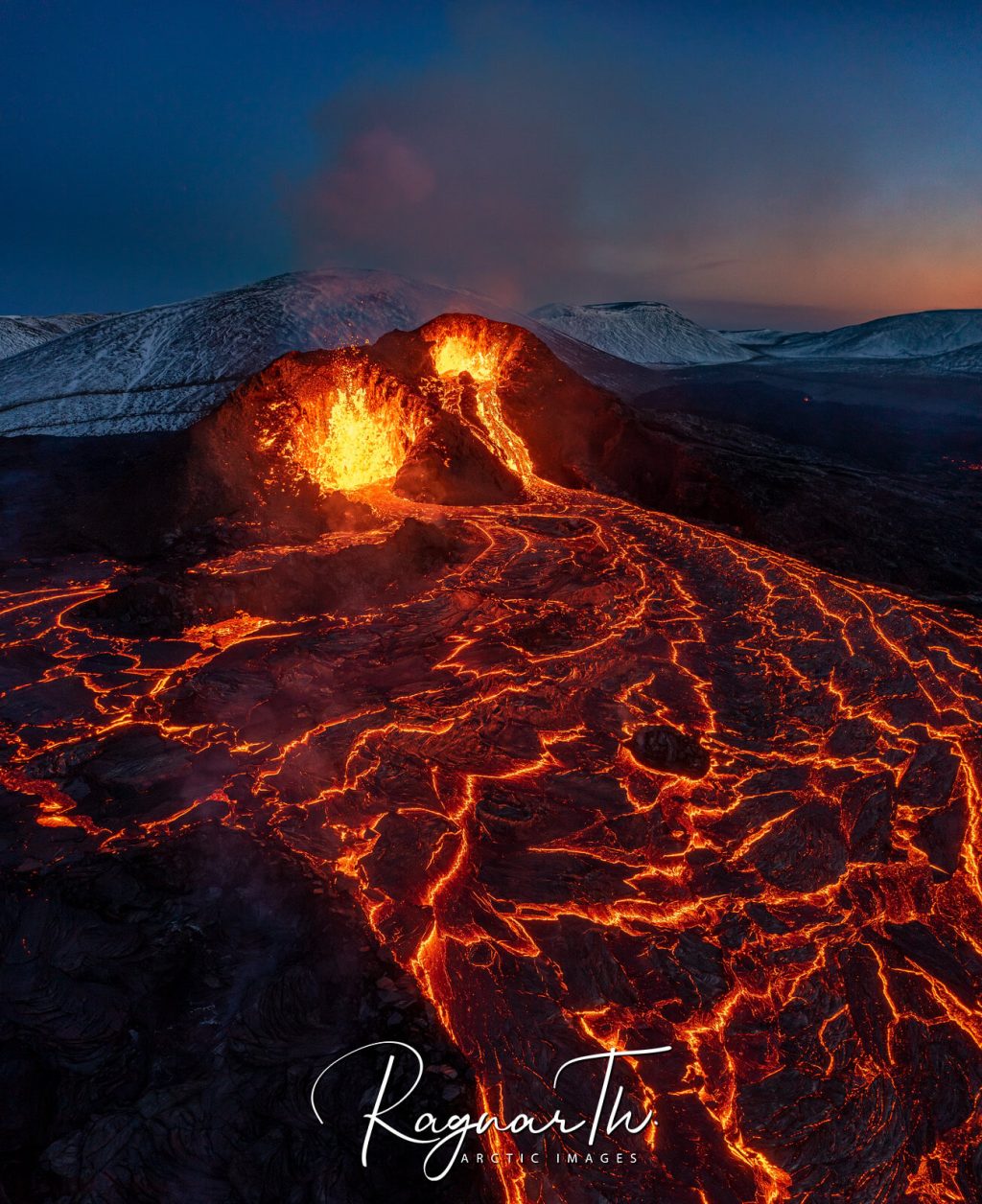
Was this the first time you have visited an active eruption site, and if not how did it compare?
I have visited many volcanic sites and active volcanoes, mostly in Iceland, but also Italy and New Zealand. This one is rather small in comparison but very beautiful, especially at the time I went. If the eruption continues into the summer I would recommend a visit during the darkest period, which will be during the night, but even then it will only be twilight. However, if you are lucky like I was, with good weather conditions it will be an experience you will never forget!
If you can’t wait to start planning your school trip to visit an erupting volcano then start the process by enquiring now!
